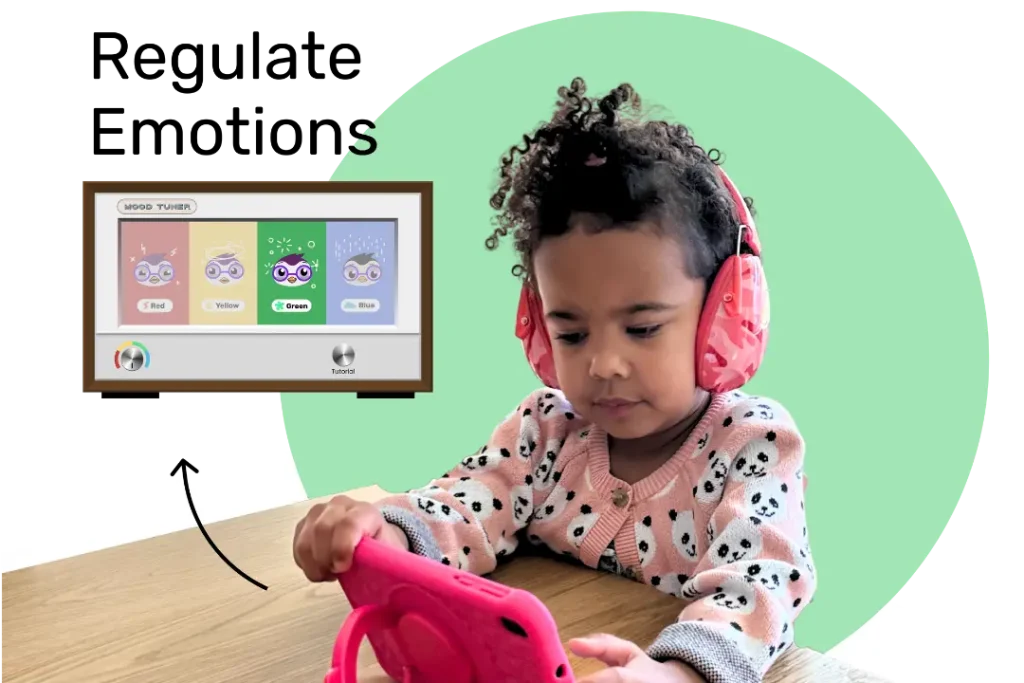Parenting can feel like solving a giant puzzle, especially when trying to understand your child’s emotions. You might wonder, “How does a child express their feelings through behavior?” Don’t worry! This guide will help you unlock the secrets of your neurodivergent child’s emotional world and improve communication between you both.
Table of Contents
The ABCs of Emotional Expression
First, let’s learn how kids show their feelings. Here are five ways children express themselves:
- Facial expressions
- Body language
- Tone of voice
- Playtime activities
- Artwork or drawings
Watch for these clues to better understand what your child is feeling. Kids communicate in many ways without even saying a word! We gain valuable insights by paying close attention to their facial expressions, body language, and tone of voice during playtime activities or while creating artwork.

Read more: Reward Ideas for Kids
Decoding Neurodivergent Kids’ Emotional Signals
| Condition | Emotional Signals |
|---|---|
| Autism Spectrum Disorder (ASD) | Trouble with eye contact; unusual facial expressions; repetitive actions when stressed; meltdowns due to sensory overload |
| Attention Deficit Hyperactivity Disorder (ADHD) | Impulsive outbursts or tantrums; mood swings; frustration when facing challenges |
| Anxiety Disorders | Excessive worry or fear about everyday situations; physical symptoms from stress (headaches/stomachaches); panic attacks during high-stress moments |
Knowing these traits helps parents support their neurodivergent kids in expressing and managing emotions more effectively.
How Does a Child Express Their Feelings Through Behavior? Emotion Coaching Tips!
Now that we know how kids show their feelings through actions let’s learn some ways to help them express emotions:
- Validate their feelings: Let your child know you understand and accept their emotions without judging or criticizing.
- Encourage open communication: Make sure your child feels safe talking about their thoughts and feelings with you.
Creating a safe space for open communication is crucial in helping children express themselves. By validating their feelings, teaching emotional vocabulary, and modeling healthy emotional expression, we can empower our neurodivergent kids to better manage strong emotions.
Goally | The Tablet for Neurodiverse Kids

Offer guidance on coping strategies:
- Deep breathing exercises
- Mindfulness practices
- Physical activities like running or dancing
Teaching kids various techniques for managing strong emotions will help them navigate life’s ups and downs more effectively.
Playtime Power in Emotional Expression
Playtime is very important for helping children show their feelings! Through fun activities like role-playing or storytelling, kids can explore different situations and practice showing various emotions safely. Also, creative outlets like drawing or painting let children share their feelings through art.
Encouraging playtime not only helps children develop emotionally but also fosters creativity and problem-solving skills. So make time for play – it’s essential for your child’s growth!

Read more: 5 Emotional Regulation Activities
Navigating Emotional Roadblocks with Neurodivergent Kids
Sometimes understanding how a child expresses their feelings through behavior can be extra tough for parents of neurodivergent children. Here are some tips for tackling those challenging moments:
- Stay calm under pressure – When dealing with an emotional situation involving your child’s behavior, remember that staying calm is important.
- Be patient – It might take time for both you and your kid(s)to get better at understanding each other’s emotional language.
Seek professional guidance if needed:
- Therapists specializing in working with neurodivergent kids
- Support groups or online forums where parents share experiences
Don’t hesitate to seek help from professionals who specialize in supporting families of neurodivergent children. They can provide valuable guidance and resources.
Remember self-care:
- Take breaks when needed
- Connect with friends or family for support
- Engage in activities you enjoy
Parenting can be emotionally draining; make sure to take care of yourself too!
The Emotional Rewards of Decoding Kids’ Feelings
Figuring out how a child expresses their feelings through behavior might seem hard at first, but it comes with great rewards:
- Better communication between you and your child
- Knowing more about your kid’s unique needs
- A stronger bond between parent and child based on trust and empathy
- Happier, emotionally strong children
Goally | Kid’s Tablet for Building Emotional Regulation Skills
Is your child struggling with understanding and managing their emotions? Goally teaches emotional regulation skills in a fun and interactive way!

The Mood Tuner app encourages kids to look inwards and identify their feelings, helping them understand what’s going on inside. Once they’ve recognized their emotions, they can choose from a variety of exercises designed to help them self-regulate and find their balance.
So go ahead – put on that detective hat and start decoding! With time, patience, and practice, you’ll become an expert in understanding your neurodivergent child’s emotions. And remember: every step taken towards better emotional expression is a victory worth celebrating.
FAQ’s About How Does A Child Express Their Feelings Through Behavior
Why do young children express feelings through behavior? Young children lack the vocabulary to fully express complex emotions. They may use actions to communicate big feelings they don't fully understand or can't put into words. What are some common ways children show sadness through behavior? They might become withdrawn, cry, lose interest in activities, or display clingy behavior. How might a child express anger through actions? Anger can manifest as tantrums, hitting, yelling, throwing objects, or refusing to cooperate. Could changes in behavior signal anxiety in a child? Anxiety can lead to sleep problems, difficulty concentrating, frequent stomach aches, or a reluctance to separate from parents. How can I help my child express emotions in healthy ways? Label their feelings for them, model healthy emotional expression, and offer tools like drawing, playing with calming toys, or using simple breathing exercises.
This post was originally published on 04/17/2023. It was updated on 03/21/2024.

Goally
We help parents teach their kids life skills, like doing bedtime and morning independently. Backed by science, we incorporate evidence-based practices and expert-informed designs in all of our apps and content.





